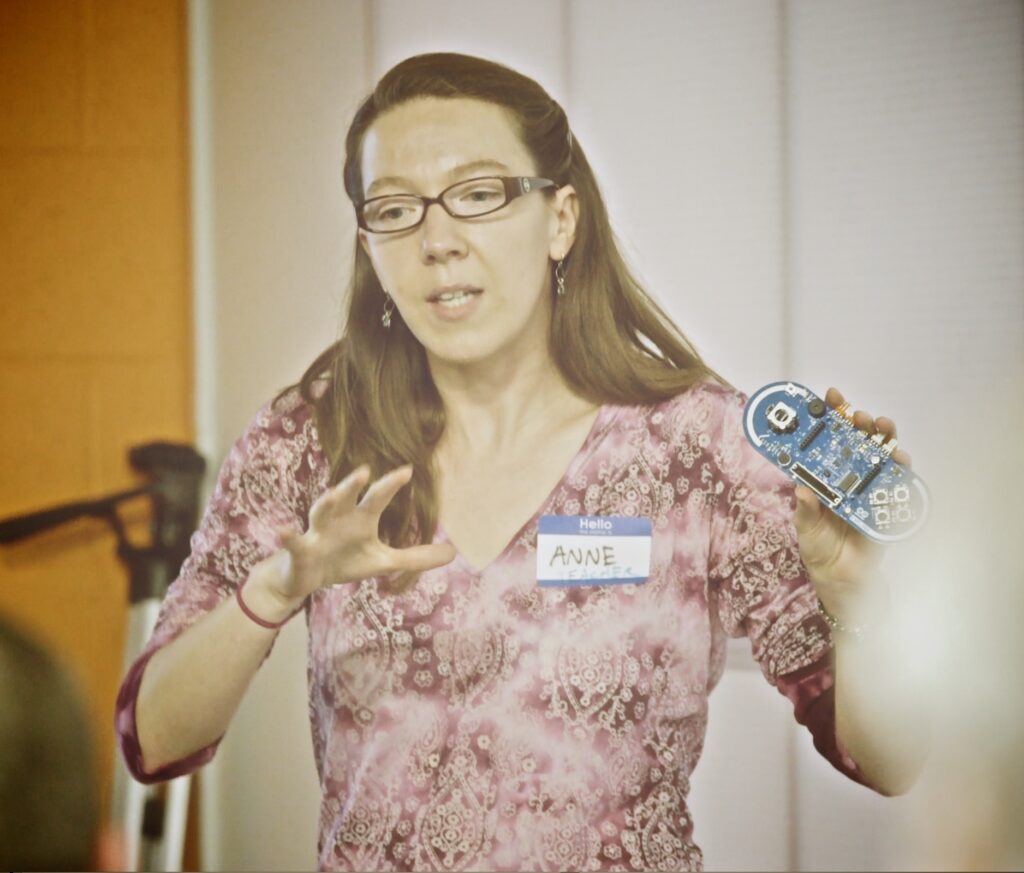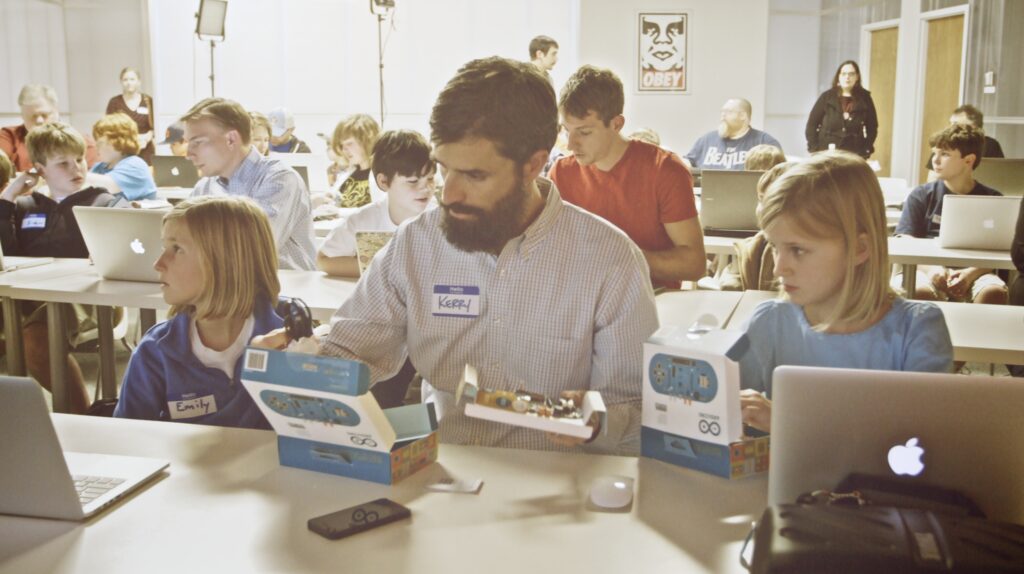Learning Game Programming with Esplora at the Iron Yard

Anne Mahaffey teaching with the Esplora – Photo: Chris Brank
Anne Mahaffey is an engineer with Analog Devices and was one of the beta testers for the Arduino Due. Anne’s been an ardent advocate for Arduino at Analog, and recently contacted us about a workshop she was planning with the Iron Yard, an accelerator in her hometown of Greenville, South Carolina. The workshop was to introduce kids to programming in Scratch, and to let them build their own game controller with Arduino. She had plans to do it the way many Arduino workshops go: introduce the kids to a little electronics, then a little code, then get them building. She happened to reach us about the time we were putting the finishing touches on the new Esplora, and since we had a good reationship with her as a beta tester, we suggested that she try the Esplora instead. We had a good feeling about it, but no one had used it for a class yet. But Anne’s game for anything, so she said yes.
When she got the boards in hand, she was a bit skeptical:
“I won’t lie. The Esplora was not at all what I had in mind… what about the breadboard? The wires? The hookup diagrams? Isn’t that the fun part? Is it possible likely certain that my perceptions/opinions are being colored by my extremely specialized professional experience as an Analog/RF-centric Electrical Engineer?”
But she gave it a try. The results were promising:
“My first class was last night. I had 17 kids, mostly aged 10-12, if I had to guess. Each child (or sometimes, pair of siblings) had a parent. I had 5 or so volunteers, as I anticipated the first class would be the most challenging.
“It only took about 10 minutes to hand out Esploras, connect them, select correct board and port, and upload EsploraBlink. We had two Windows machines that we had to work with b/c they had many COM ports, so we needed to investigate which COM port was associated with the Esplora.””
“In an hour and a half, I was able to send everyone home with a known working Esplora, which had run EsploraBlink, EsploraAccelerometer, and EsploraMusic; knowledge of how to select board, port, open example, upload to board, and open serial port; my e-mail, and a link to my tumblr… with the ability to ask me questions via both…
“Everyone, including parents were very engaged. They were very attentive, and I think everyone had a really good time!”

The Iron Yard Arduino Class. Photo: Chris Brank
January 26th, 2013 at 01:08:21
The guys at The Iron Yard are doing an awesome job – proud to have them promoting tech in Greenville. With such a wonderful opportunity here in town, I’ve been on the lookout for any kid I can point that direction. : )
January 30th, 2013 at 15:31:13
This is my first time visit at here and i am in fact impressed to
read everthing at single place.